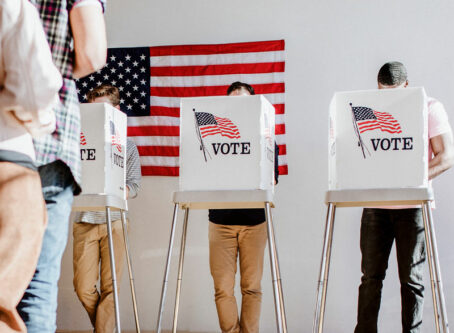What is ranked-choice voting?
State officials and voters from California to New York are making decisions on a new method of Election Day voting.
The method of voting is known as ranked-choice voting. It allows people to list candidates on their ballot by order of preference. Essentially, it works as an instant runoff.
How it works: If no candidate receives 50% of the first-choice votes, the candidate with the fewest votes is eliminated from consideration and their votes are distributed among the remaining candidates. The eliminated candidate’s votes are given to whomever the individual voter chose as their second option. The process is repeated until one candidate reaches majority.
Nine states have jurisdictions that exercise ranked-choice voting, according to Ballotpedia. Another three states include jurisdictions yet to implement the voting process.
In November 2018, the newly adopted voting system in the state of Maine was successful in swinging the outcome of a U.S. Senate seat. The second-place finisher on election night was able to overcome their deficit by eliminating votes for multiple candidates who finished far short of the majority needed to win.
Maine is set to become the first state to use ranked-choice voting for all offices in time for the 2020 presidential election.
Advocates say the new voting process levels the playing field for all candidates. They add it could discourage candidates from attacking their opponents in hopes of being ranked higher on ballots for voters who did not choose them first.
Critics say it is a more complicated and confusing method for voters to understand. They add that there are benefits to having two top finishers have to campaign against one another.
California governor vetoes change
California state legislators recently approved a bill to allow cities and counties throughout the state to replace runoff elections with ranked-choice voting.
Local elections in Oakland, San Francisco, San Leandro and Berkeley already use the voting system.
Gov. Gavin Newsom vetoed the bill to allow voters in all cities and counties to decide whether to switch to the election method.
Newsom said in his veto letter on SB212 the “experiment” of ranked-choice voting has been tried in multiple locales around the state.
“Where it has been implemented, I am concerned that it has often led to voter confusion and that the promise that ranked-choice voting leads to greater democracy is not necessarily fulfilled.”
New York City to decide on ranked-choice voting
Voters in the nation’s largest city will decide in about two weeks whether they want to adopt ranked-choice voting in citywide elections.
Ballot Question 1 is a charter amendment on the New York City ballot. Passage would give voters the ability to rank up to five candidates in all primaries and special elections for offices that include mayor, borough president and members of the city council.
If approved, the voting system is expected to be up and running by 2021.









